
There’s nothing quite like the sizzle of a steak on the grill — a charred crust, smoky aroma, and juicy bite that makes you excited to sit down and eat. Grilling enhances natural flavors and creates a difficult-to-replicate sear that’s hard to resist.
But what makes a cut the best for grilling? It all comes down to marbling, tenderness, and thickness, which work together to lock in flavor when cooked over high heat and deliver a satisfying bite. Discover the best cuts of steak for grilling to prepare for your next cook.
Ribeye
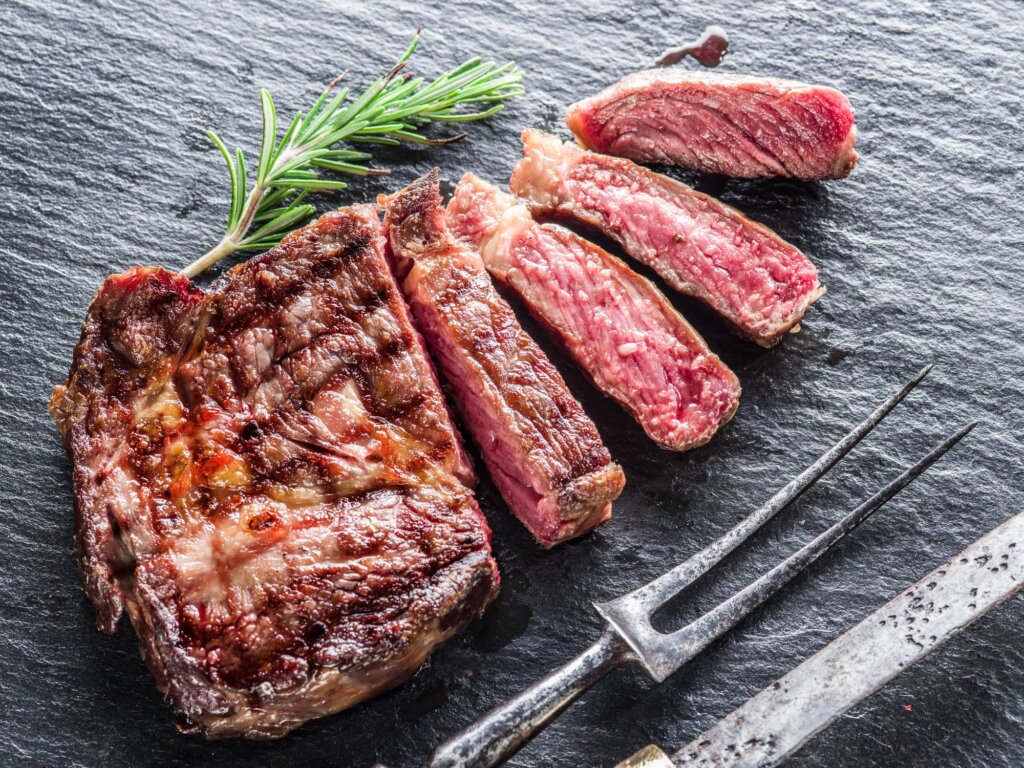
Ribeye steak is a top choice for grilling because of its rich, beefy flavor and tenderness. Cut from the rib section of the cow, this cut has abundant marbling that melts during cooking, which infuses the meat with juiciness and makes each bite tender. The ribeye’s fat content also enhances its flavor and helps protect the meat from drying out under the high heat of the grill, making it ideal for achieving that perfect char that grills are known for. Seasoned grill masters and beginners alike can appreciate the ribeye for consistently delivering results that represent the best of what steak has to offer.
Ribeye Grilling Tips:
- Due to its higher fat content, ribeye has a high risk of flare-ups. If the flames intensify, move the steak to a cooler part of the grill to avoid burning it.
- Use a meat thermometer to ensure your ribeye reaches around 130°F for a perfect medium-rare finish without overcooking. The steak will rise in temperature slightly while resting, resulting in 135°F for medium-rare.
Get It: USDA Prime Wet-Aged Ribeye
Top Sirloin
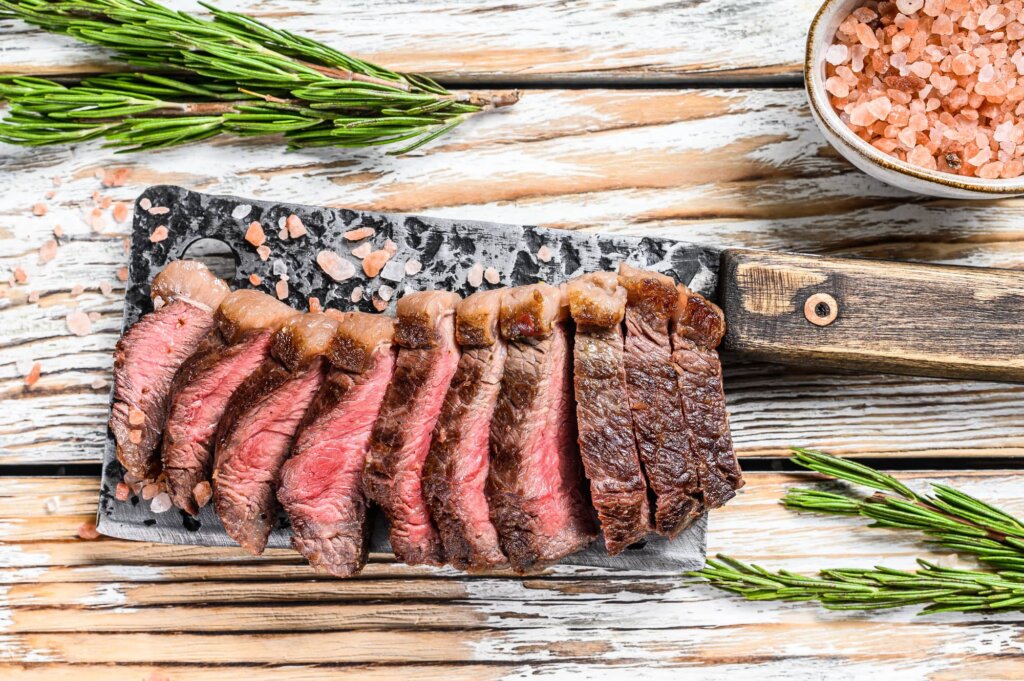
Top sirloin steak is a versatile, lean cut of beef from the sirloin section near the cow’s rear. While it doesn’t have as much marbling as a ribeye, its robust beef flavor and firmer texture still make it an excellent choice for grilling — and with a reduced risk of flare-ups. Top sirloin works really well with marinades or dry rubs, both of which help bring out its natural flavors. This cut offers a healthier option for those who prefer a leaner steak. With the right grilling technique, top sirloin can be juicy and tender even when grilled over high heat.
Top Sirloin Grilling Tips:
- Since top sirloin is leaner, marinate it for at least 30 minutes to help tenderize the meat and lock in moisture that grilling can sometimes zap.
- Grill the top sirloin directly for about 3 minutes per side to develop a crust, then move it to indirect heat if needed to reach your desired doneness without drying it out.
Get It: Premium Angus Beef Top Sirloin
T-Bone
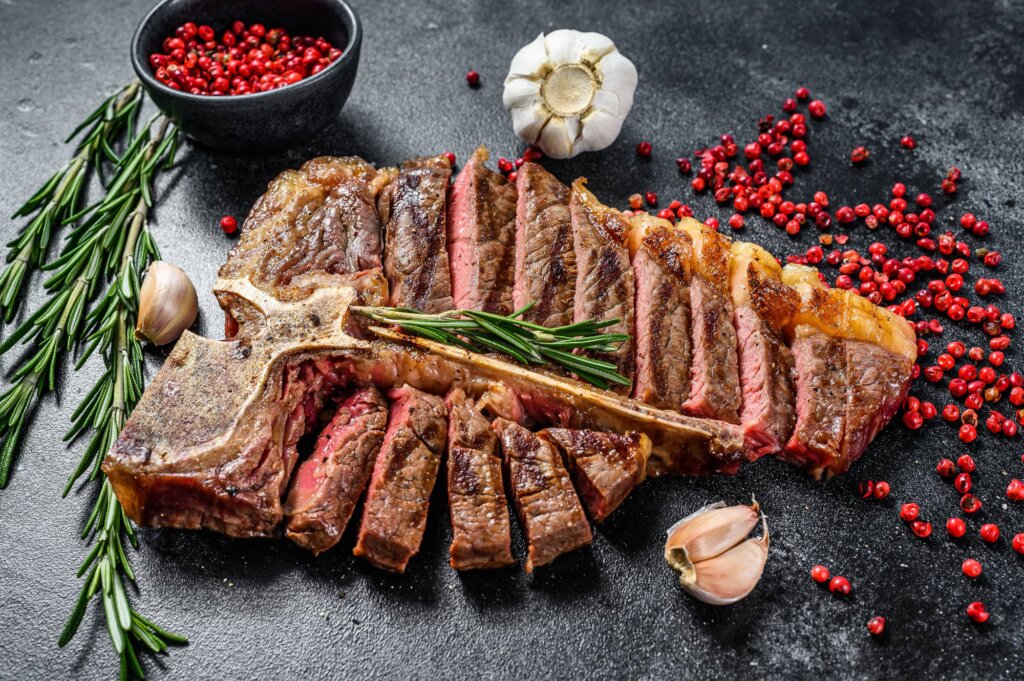
T-bone steak is a classic grilling favorite. Cut from the short loin, T-bone is unique in that it offers two cuts in one, with a flavorful strip steak and a tender filet separated by a T-shaped bone. This steak won’t disappoint in flavor or tenderness, thanks to its combination of these two cuts. In addition to the bone adding character to T-bone, it also helps conduct heat to cook the steak evenly. Grilled T-Bone gives you a deliciously seared crust on the strip side and a delicate texture on the filet side, making it a true showstopper on any grill.
T-Bone Grilling Tips:
- Keep in mind that the strip and filet portions cook at different rates. Adjust positioning over the grill’s heat to ensure an even cook.
- Try a reverse sear. Start with the T-bone over low heat and finish it off with a high-heat sear to allow it more time to cook inside without getting overly brown on the outside.
Get It: Premium Angus Beef T-Bone
Porterhouse
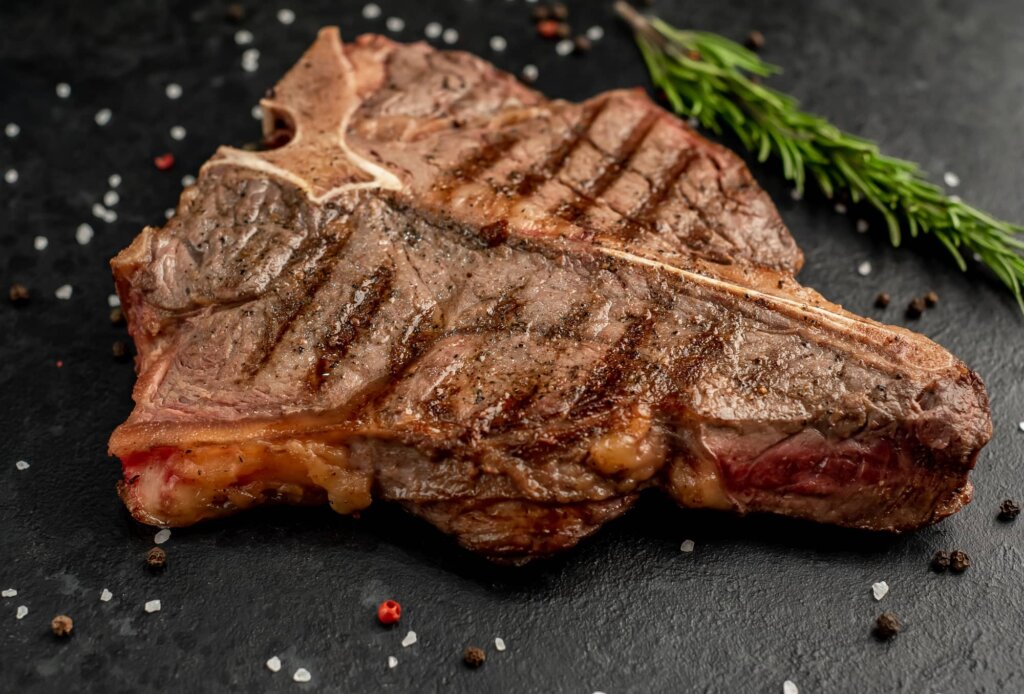
Porterhouse is very similar to T-bone. They’re both from the short loin, but the porterhouse comes from the rear part of it, making it larger and, usually, thicker. The excellent marbling throughout the meat yields high-quality flavor and tenderness, and its impressive size makes it perfect for sharing. Like a T-bone, grilling a porterhouse requires a bit of attention, as the dual cuts have different textures and cook at slightly different rates. But when done right, you can enjoy an unforgettable steakhouse experience at home.
Porterhouse Grilling Tips:
- Sear over direct heat, then move to indirect heat to ensure even cooking of both the filet and strip sections.
- Adjust the grilling time based on the steak’s thickness to avoid overcooking the delicate filet.
Get It: USDA Prime Wet-Aged Porterhouse
Filet Mignon
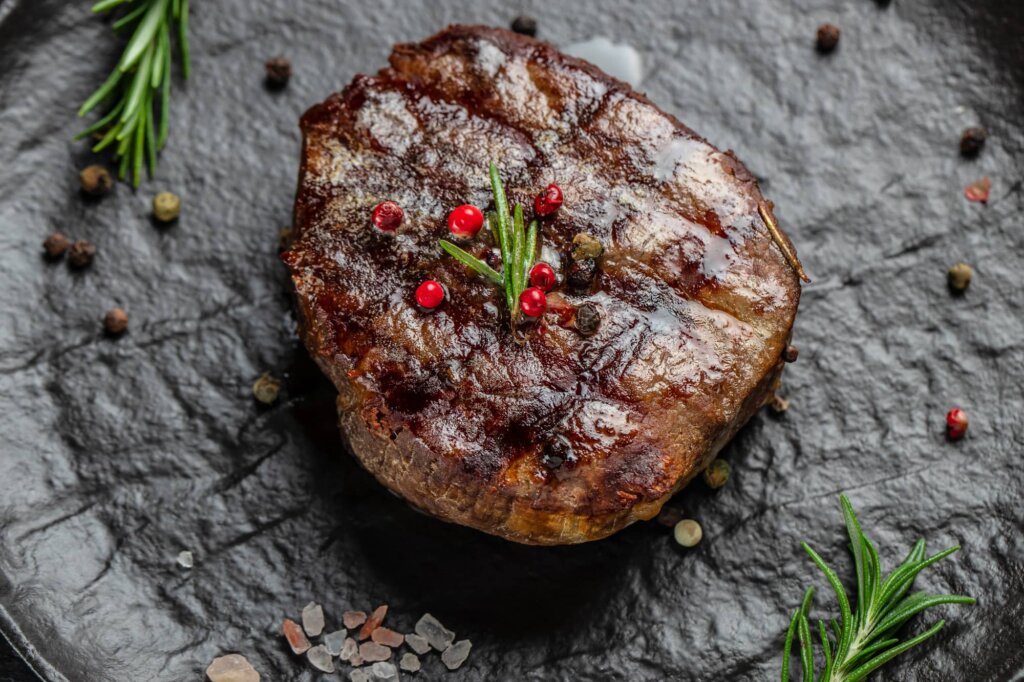
Filet mignon has a more subtle flavor than other steaks, but grilling helps pull it out. Where this cut really shines is in its tenderness, which many describe as “melt-in-your-mouth.” This cut, which comes from the end of the tenderloin of a cow, has minimal marbling. That makes it pretty delicate, so it’s one you’ll have to watch carefully on the grill. When grilled properly, filet mignon develops an excellent sear while maintaining a tender center.
Filet Mignon Grilling Tips:
- Add a pat of butter to the top of the filet mignon as it rests at room temperature for some extra flavor and a smooth finish.
- Use a meat thermometer to ensure the internal temperature reaches only 120°F to 130°F for medium-rare, as overcooking can quickly compromise its tenderness.
Get It: USDA Prime Wet-Aged Filet Mignon
Tenderloin
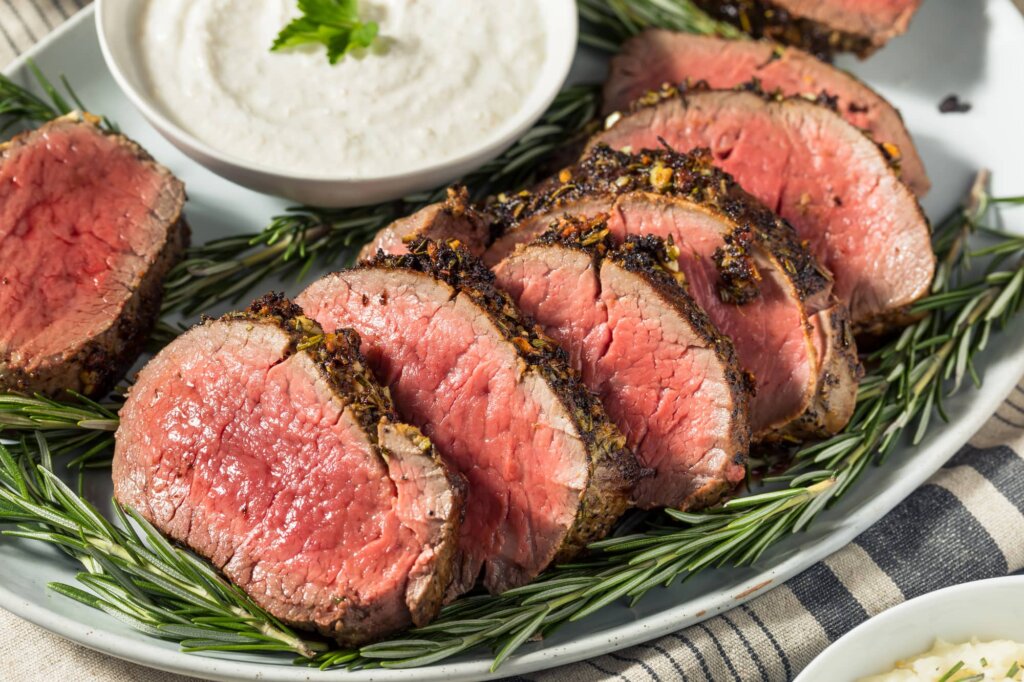
Tenderloin is a lean cut that comes from an area near the spine of a cow. It’s known for its unmatched tenderness and mild flavor that takes well to seasonings and spice rubs. Because it has a low amount of connective tissue, it cooks relatively quickly on the grill, but you’ll need to keep a watchful eye on it to make sure it doesn’t overcook after developing a sear.
Tenderloin Grilling Tips:
- If grilling a whole tenderloin, consider tying it with butcher’s twine to ensure a uniform shape, which helps in achieving an even cook throughout.
- Given its lean nature, check the internal temperature frequently and aim for around 125°F for medium-rare to keep it from drying out.
Get It: Chateaubriand Tenderloin Roast
Strip
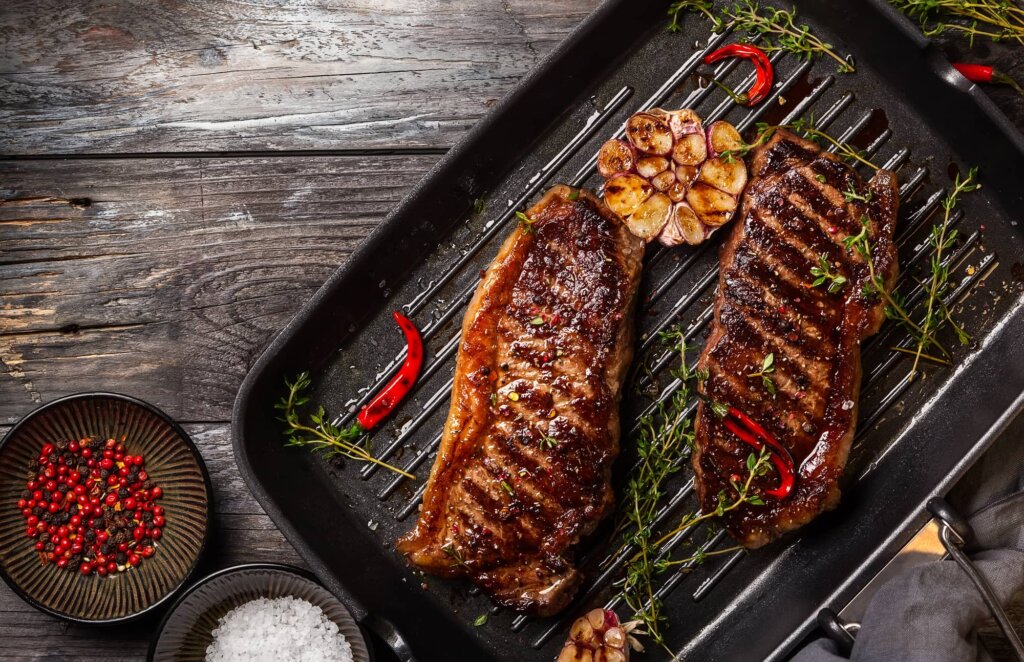
Strip steak, often called New York strip, comes from the short loin of the cow. It has a lot of beefy flavor and a firm texture, so it’s not as delicate to cook on the grill as, say, a filet mignon or tenderloin. Although it’s considered a lean cut, it has some marbling, which helps boost flavor and maintain juiciness on the grill. The strip steak’s uniform shape and consistent thickness also make it easy to get an even sear.
Strip Grilling Tips:
- Don’t skip the resting period. This cut needs a good 10-15 minutes to rest after grilling to redistribute juices before slicing it.
- Flip strip steak every 20-30 seconds on the grill for an even sear and to enhance the conductive heating process to heat the middle of the steak.
Get It: Premium Angus Beef Boneless Strip
Flat Iron

Flat iron steak is also known as top blade steak. It comes from the shoulder of the cow, which is an exercised area. However, it has an impressive tenderness if not overcooked, and it boasts a deep, beefy flavor. Its uniform thickness makes it ideal for quick, high-heat grilling. It’s common to slice grilled flat iron steak to use for stir-fry, fajitas, and other steak dishes.
Flat Iron Grilling Tips:
- Always slice flat iron thinly and against the grain to enhance its tenderness. Only do so after it rests for at least 5-10 minutes.
- Consider marinating flat iron steak to give it a little tenderness boost before grilling. Marinate in the fridge for at least one hour or up to 24 hours before you’re ready to cook.
Get It: USDA Prime Wet-Aged Flat Iron
Conclusion: Best Grilling Cuts of Steak
The grill can truly bring out the best in every steak cut. From ribeye to flat iron, each steak offers unique flavors and textures for an unforgettable meal fresh off the grill. Ready to elevate your cookouts? Order premium steaks from Chicago Steak Company to transform your next grill session.

